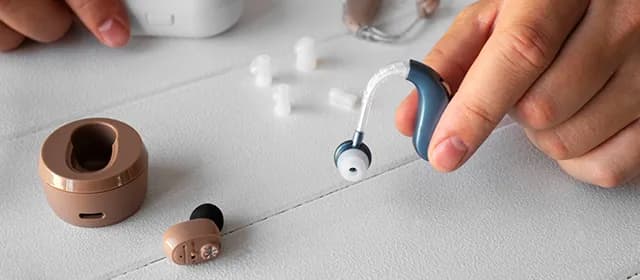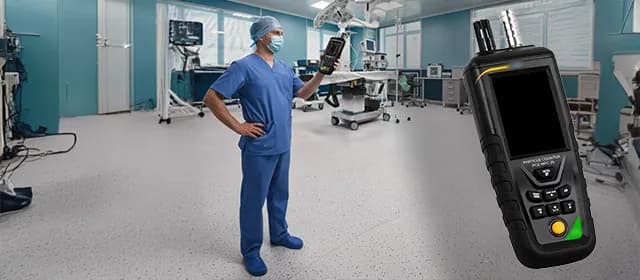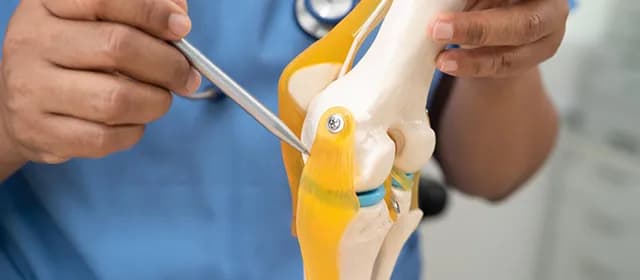In scientific research, there is a constant need for precise control and manipulation of fluids in small quantities. Traditional methods often involve bulky and complex setups, making it challenging to achieve the desired level of control. This limitation has hindered advancements in numerous fields, including biotechnology, medicine, chemistry, and environmental science. The need for a more efficient and precise solution has become imperative. Thus, microfluidics emerges as a perfect solution. According to Kings Research, the global Microfluidics Market is projected to reach $90.26 billion by 2030. Let’s learn more about it.
What is Microfluidicsa?
Microfluidics is a cutting-edge field that involves the manipulation and analysis of fluids at the microscale, typically on the order of micrometers. It combines principles from various disciplines such as engineering, physics, chemistry, and biology to create devices that can control the flow of fluids with high precision and accuracy.
Benefits of Microfluidics
- Sample and Reagent Reduction: Handling small volumes reduces resource consumption and enables high-throughput experimentation.
- Enhanced Efficiency: Microfluidic devices accelerate research with rapid analysis and precise control over fluid behavior.
- High-Throughput Solutions: Processing multiple samples simultaneously enhances productivity and analysis capabilities.
- Miniaturization and Portability: Integration into compact "lab-on-a-chip" formats allows for portable and field-friendly applications.
- Integration and Automation: Simplified workflows and reduced errors through integrated lab routines and automation.
- Analytical Sensitivity: Detection of low-concentration analytes expands research possibilities in proteomics and genomics.
- Environmental Benefits: Resource conservation and waste reduction contribute to sustainable scientific practices.
The widespread adoption of microfluidics underscores its transformative impact on biotechnology, medicine, chemistry, and environmental science, driving advancements in diagnostics, drug discovery, and genetic analysis.
Uses of Microfluidic
- Biomedical Research: It plays a crucial role in biomedical research by enabling the study and manipulation of cells, DNA, proteins, and other biological samples. It has applications in areas such as genomics, proteomics, drug discovery, and personalized medicine.
- Point-of-Care Diagnostics: Microfluidic devices have the potential to revolutionize healthcare by enabling rapid and portable diagnostic tests. These devices can perform various tests, such as blood analysis, pathogen detection, and monitoring disease biomarkers, at the point of care, reducing the need for centralized laboratory facilities.
- Chemical Analysis: It allows for precise chemical analysis, including chromatography, spectroscopy, and immunoassays. It provides a platform for miniaturized chemical reactions, enabling high-throughput screening and analysis of compounds.
How Do Microfluidics Work?
Microfluidics operates by integrating components and techniques to control and analyze fluids. Here's an overview:
- Microfluidic Devices: Fabricated with lithography or 3D printing, these devices feature microchannels and valves for fluid control.
- Fluid Manipulation: Fluids move through microchannels via pressure-driven or electrokinetic methods.
- Precise Control: It offers precise manipulation, mixing, and separation through channel design and external forces.
- Integration and Automation: Lab routines like sample preparation and analysis are integrated for efficiency and reproducibility.
- Analysis and Detection: Microfluidic devices analyze cells, DNA, proteins, and chemicals using sensors and detectors.
- Miniaturization and Portability: Highly miniaturized systems enable portability, making them ideal for point-of-care diagnostics and field use.
Are there any ethical considerations with Microfluidics?
Concerns arise with the use of human cells and tissues in microfluidic devices, notably organ-on-a-chip models, raising ethical questions about consent, privacy, and potential misuse.
Navigating regulatory hurdles proves challenging for microfluidic device approval due to time-consuming processes and lack of standardization, posing barriers to meeting regulatory requirements.
Responsible research and development practices are paramount, necessitating ethical considerations to ensure the well-being of research subjects, minimize harm, and adhere to ethical guidelines.
Addressing equity and access issues as microfluidics technology evolves is imperative. Ensuring universal access to microfluidic devices and their benefits, regardless of socioeconomic status or geographical location, is an ethical imperative.
What Are the Challenges Facing Microfluidics Research?
- Complexity of Fabrication: Fabricating microfluidic devices requires specialized equipment and expertise, making it challenging for researchers without access to these resources to participate in the field.
- Fluid Control and Manipulation: Achieving precise control over fluid flow in microfluidic systems can be difficult, particularly at small scales. Addressing issues such as fluidic resistance, bubble formation, and clogging is crucial for reliable operation.
- Integration of Components: Integrating various components, such as pumps, valves, sensors, and actuators, into microfluidic devices while maintaining functionality and reliability presents a significant challenge.
- Standardization: The lack of standardized protocols and fabrication techniques hinders reproducibility and comparability between studies. Establishing common standards and best practices is essential for advancing the field.
- Biocompatibility and Compatibility: Ensuring that materials used in microfluidic devices are biocompatible and compatible with biological samples is critical for applications in life sciences and biomedical research.
- Scale-Up and Commercialization: Scaling up microfluidic technologies from lab-scale prototypes to mass production for commercial applications requires overcoming manufacturing challenges and ensuring scalability while maintaining performance and cost-effectiveness.
- Regulatory Approval: Obtaining regulatory approval for microfluidic devices can be challenging due to the novelty of the technology and the need to demonstrate safety and efficacy according to regulatory standards.
Decoding the Relationship Between Microfluidics and the Environment
Here are some key points regarding the environmental implications:
- Water Contaminant Analysis: Microfluidic systems serve as sensors for the analysis of water contaminants. They offer high sensitivity and accuracy in detecting pollutants such as heavy metals and organic compounds.
- Microorganism Detection: Microfluidic devices are used to detect microorganisms in environmental samples. They enable the identification of viruses, bacteria, and other microorganisms, facilitating environmental monitoring efforts.
- Investigation of Environment-Related Issues: It provides a platform for studying environment-related problems. It enables the examination of processes like bacteria electron transfer and biofilm formation, contributing to a better understanding of ecological and environmental dynamics.
- Artificial Ecosystems: Microfluidic techniques combined with microbiology allow for the creation of artificial ecosystems with controlled environmental conditions. This offers researchers the ability to study ecological processes with precise control and over extended periods.
- Soil Biofilms and Microorganisms: Microfluidic platforms, including soil-on-a-chip devices, are used to study soil biofilms and the impact of microorganisms on ecological and biological systems. These devices enhance our understanding of soil ecosystems and support the development of improved agricultural practices.
- Environmental Monitoring: Microfluidic devices, particularly low-cost options, are effective for environmental monitoring assessments. They provide cost-effective solutions for the continuous tracking of chemical agents and contribute to the widespread adoption of microfluidic technologies in environmental monitoring efforts.
Final Takeaway
Microfluidics has opened up new frontiers in scientific research, enabling precise control and analysis of fluids at the microscale. Its benefits include enhanced efficiency, precise control, and rapid analysis, making it a powerful tool in various fields such as biotechnology, medicine, and chemistry. With its potential to drive advancements in healthcare, diagnostics, and environmental monitoring, this field holds the promise of transforming the way we approach scientific research and solve complex challenges.




